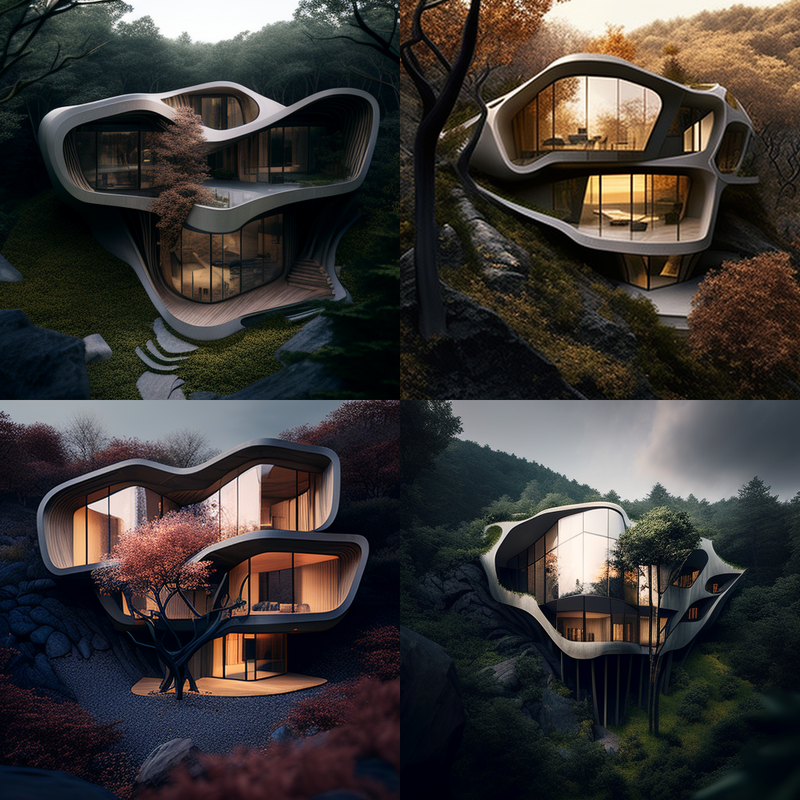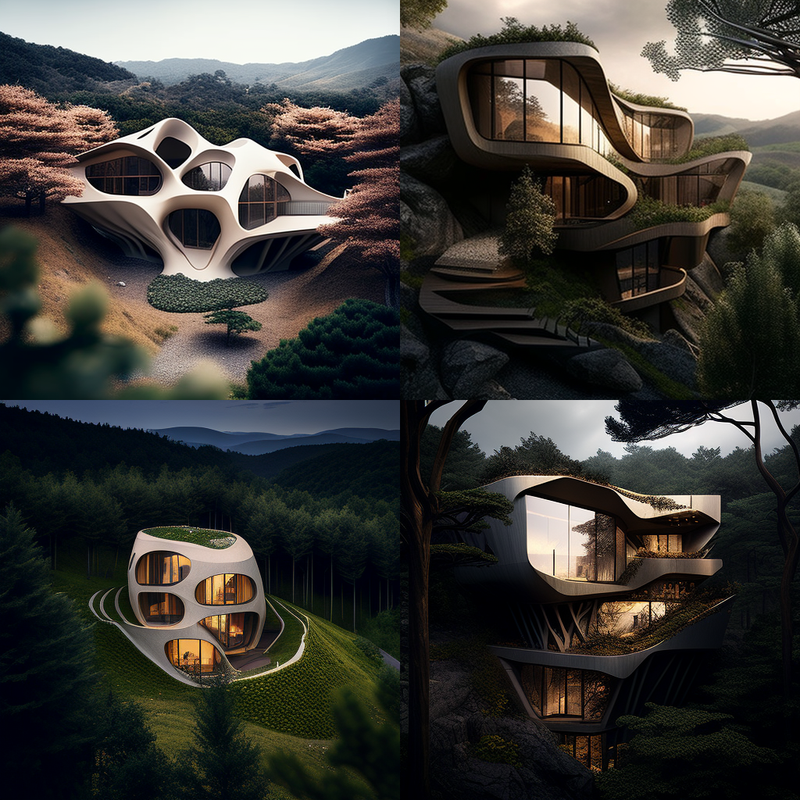The organic house is located on a steep slope in Kagawa, Japan, and is surrounded by beautiful nature. The house's design is influenced by the natural setting, and Kuma's goal was to build a structure that merges in with its surroundings. The house is energy-efficient, with an emphasis on sustainability and environmental friendliness.
The house's interior is open and spacious, with huge windows that let in lots of natural light. Natural elements, such as wood and stone, create a warm and inviting environment. The furniture is simple and unobtrusive, allowing the natural beauty of the surrounds to shine through.
The roof of the home is one of its most striking characteristics. A covering of grass covers the roof, which not only offers insulation but also helps to adjust the temperature within the house. The grass roof also acts as a natural filter, purifying the air and reducing pollutants in the surrounding area.
The house's utilization of geothermal energy is another distinguishing characteristic. A geothermal heating and cooling system, which uses the steady temperature of the ground to adjust the temperature within the building, is used to heat and cool the house. This system is extremely efficient and eco-friendly, and it contributes to lowering the house's carbon impact.
The house is also built to be self-sufficient, with an emphasis on sustainable living. Solar panels are installed on the roof, providing the house with clean, sustainable energy. The house also contains a rainwater collecting system that gathers and stores rainwater for later use. This method helps to minimize water use while also providing a consistent source of water for the home.
The home is designed on the concept of "engawa," a traditional Japanese architectural feature that blurs the lines between interior and outside. The home features a huge veranda that wraps around the whole structure, giving inhabitants breathtaking views of the surrounding area. The veranda is an extension of the living area that allows occupants to enjoy nature while keeping protected from the weather.
The home is designed on the concept of "engawa," a traditional Japanese architectural feature that blurs the lines between interior and outside. The home features a huge veranda that wraps around the whole structure, giving inhabitants breathtaking views of the surrounding area. The veranda is an extension of the living area that allows occupants to enjoy nature while keeping protected from the weather.
The house's interior is open and spacious, with huge windows that let in lots of natural light. Natural elements, such as wood and stone, create a warm and inviting environment. The furniture is simple and unobtrusive, allowing the natural beauty of the surrounds to shine through.
The roof of the home is one of its most striking characteristics. A covering of grass covers the roof, which not only offers insulation but also helps to adjust the temperature within the house. The grass roof also acts as a natural filter, purifying the air and reducing pollutants in the surrounding area.
The house's utilization of geothermal energy is another distinguishing characteristic. A geothermal heating and cooling system, which uses the steady temperature of the ground to adjust the temperature within the building, is used to heat and cool the house. This system is extremely efficient and eco-friendly, and it contributes to lowering the house's carbon impact.
The house is also built to be self-sufficient, with an emphasis on sustainable living. Solar panels are installed on the roof, providing the house with clean, sustainable energy. The house also contains a rainwater collecting system that gathers and stores rainwater for later use. This method helps to minimize water use while also providing a consistent source of water for the home.
The organic home exemplifies Kengo Kuma's design philosophy. His ability to merge traditional Japanese design with modern and inventive ways is absolutely remarkable. The organic house is more than simply a lovely building; it is a sustainable, eco-friendly, and energy-efficient dwelling that exemplifies the possibilities of sustainable living.
Finally, Kengo Kuma's organic house set in the steep landscape is a wonderful illustration of sustainable living. The design of the house is influenced by the natural environment, and it is intended to fit in with its surroundings. Natural materials, geothermal energy, and solar electricity are used to make the house extremely efficient and environmentally beneficial. The house is more than simply a piece of beauty; it is a monument to the possibilities of sustainable living and a model for future dwellings.
The roof of the home is one of its most striking characteristics. A covering of grass covers the roof, which not only offers insulation but also helps to adjust the temperature within the house. The grass roof also acts as a natural filter, purifying the air and reducing pollutants in the surrounding area.
The house's utilization of geothermal energy is another distinguishing characteristic. A geothermal heating and cooling system, which uses the steady temperature of the ground to adjust the temperature within the building, is used to heat and cool the house. This system is extremely efficient and eco-friendly, and it contributes to lowering the house's carbon impact.
The house is also built to be self-sufficient, with an emphasis on sustainable living. Solar panels are installed on the roof, providing the house with clean, sustainable energy. The house also contains a rainwater collecting system that gathers and stores rainwater for later use. This method helps to minimize water use while also providing a consistent source of water for the home.
The organic home exemplifies Kengo Kuma's design philosophy. His ability to merge traditional Japanese design with modern and inventive ways is absolutely remarkable. The organic house is more than simply a lovely building; it is a sustainable, eco-friendly, and energy-efficient dwelling that exemplifies the possibilities of sustainable living.
Finally, Kengo Kuma's organic house set in the steep landscape is a wonderful illustration of sustainable living. The design of the house is influenced by the natural environment, and it is intended to fit in with its surroundings. Natural materials, geothermal energy, and solar electricity are used to make the house extremely efficient and environmentally beneficial. The house is more than simply a piece of beauty; it is a monument to the possibilities of sustainable living and a model for future dwellings.

